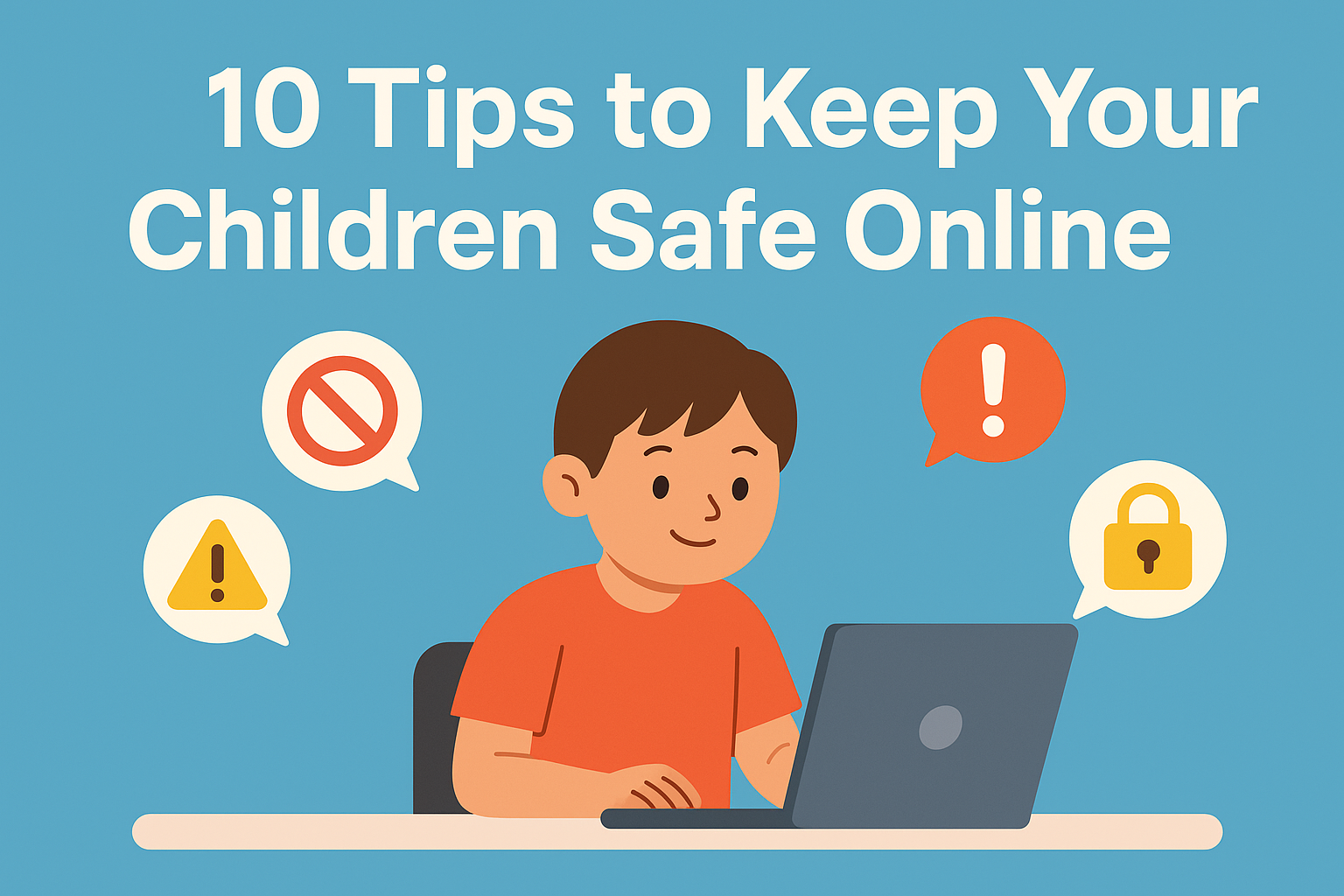Introduction
In an increasingly digital world, keeping your children safe online is more important than ever. From social media and video streaming to online games and apps, kids are exposed to various risks such as cyberbullying, online predators, and harmful content. As a parent, taking proactive steps to ensure a safe and healthy digital experience is crucial.
Here are 10 practical and effective tips to help you safeguard your children online.
1. Educate Your Children About Internet Safety
Start by teaching your kids the basics of internet safety. Explain the importance of not sharing personal information like their name, address, phone number, or school name with strangers online.
Tip: Use real-life examples or child-friendly videos to make the conversation relatable.
2. Use Parental Control Software
Install trusted parental control apps or monitoring tools that help you filter content, set screen time limits, and track online activity. These tools give you better control over what your child can access.
Popular parental control tools: EyeOnKid, Norton Family, Qustodio, Bark
3. Keep Devices in Common Areas
Encourage your children to use computers, tablets, and phones in shared spaces like the living room. This helps you supervise screen time and online behavior without invading their privacy.
4. Create Strong Password Habits
Teach your children how to create strong passwords and why it's important to keep them private. Emphasize that passwords should never be shared with friends.
Pro Tip: Use a password manager for kids to help them manage logins securely.
5. Set Screen Time Rules
Establish daily or weekly screen time limits. Balance is key—make sure your child has plenty of time for offline activities like reading, playing outside, and family time.
6. Stay Involved and Communicate
Maintain open communication. Let your child know they can come to you if they see something disturbing or if someone makes them feel uncomfortable online.
Ask questions like:
“What apps do you enjoy using?”
“Did anything weird happen online today?”
7. Monitor Apps and Downloads
Check the apps and games your child installs. Review age ratings and permissions before allowing access. Some apps may look harmless but can expose children to inappropriate ads or chats.
8. Enable Safe Search Settings
Activate safe search filters on platforms like Google, YouTube, and Bing. This helps block inappropriate content and ensures a safer browsing experience.
9. Educate About Cyberbullying
Talk about what cyberbullying is and how to recognize it. Make sure your child knows not to participate in bullying and how to report it if they’re a victim.
Warning signs include:
Sudden withdrawal from social media
Mood changes after being online
Reluctance to use devices
10. Lead by Example
Model good digital habits. Avoid excessive phone use, don’t overshare on social media, and treat others with respect online. Your actions will teach your children more than your words.
Conclusion
Keeping your children safe online isn’t about restricting their freedom—it’s about guiding them toward responsible digital habits. With these 10 tips, you can build a safer and more positive online experience for your kids.
